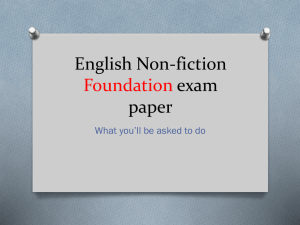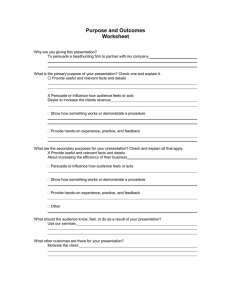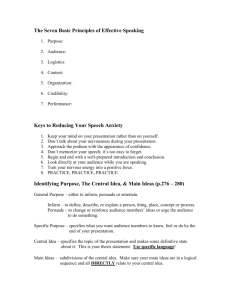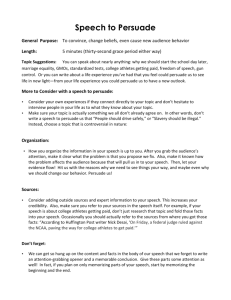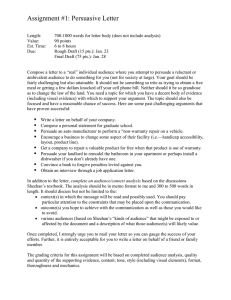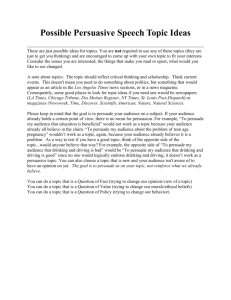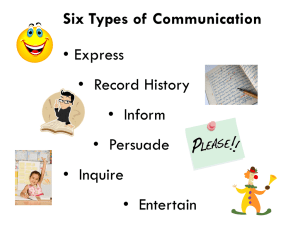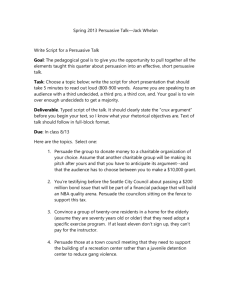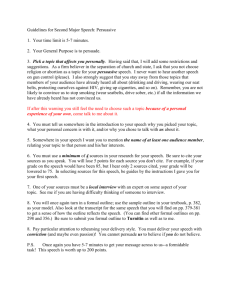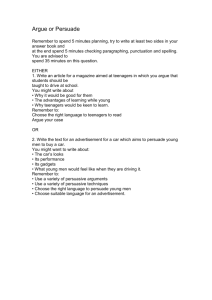Plot-Events that happen in a story
advertisement
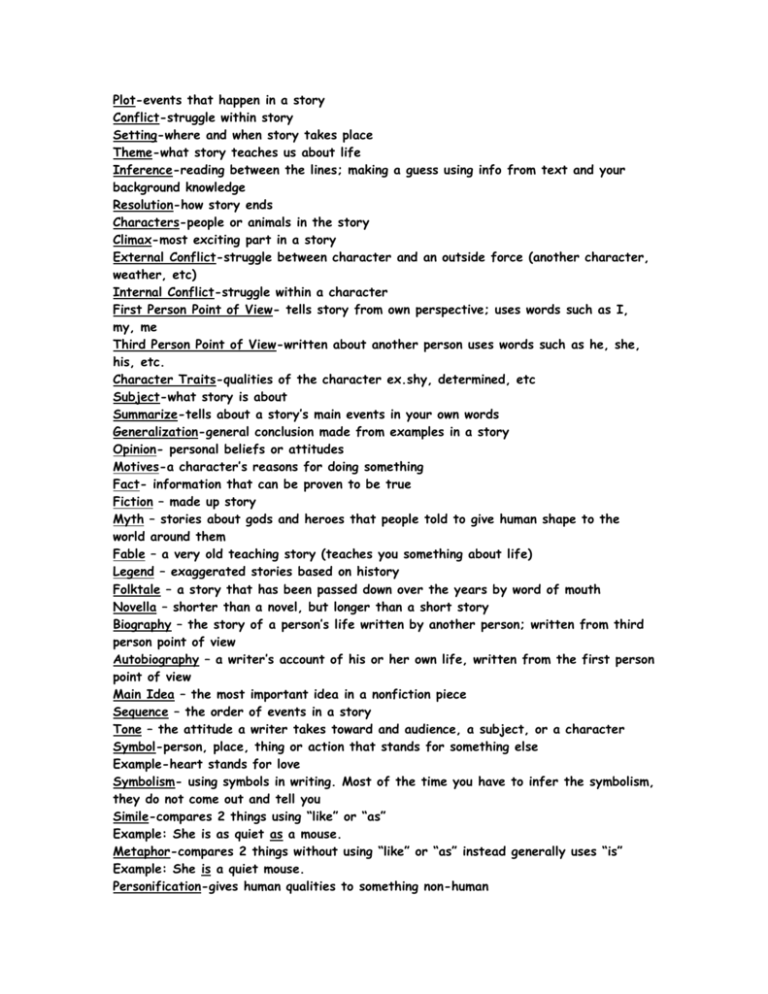
Plot-events that happen in a story Conflict-struggle within story Setting-where and when story takes place Theme-what story teaches us about life Inference-reading between the lines; making a guess using info from text and your background knowledge Resolution-how story ends Characters-people or animals in the story Climax-most exciting part in a story External Conflict-struggle between character and an outside force (another character, weather, etc) Internal Conflict-struggle within a character First Person Point of View- tells story from own perspective; uses words such as I, my, me Third Person Point of View-written about another person uses words such as he, she, his, etc. Character Traits-qualities of the character ex.shy, determined, etc Subject-what story is about Summarize-tells about a story’s main events in your own words Generalization-general conclusion made from examples in a story Opinion- personal beliefs or attitudes Motives-a character’s reasons for doing something Fact- information that can be proven to be true Fiction – made up story Myth – stories about gods and heroes that people told to give human shape to the world around them Fable – a very old teaching story (teaches you something about life) Legend – exaggerated stories based on history Folktale – a story that has been passed down over the years by word of mouth Novella – shorter than a novel, but longer than a short story Biography – the story of a person’s life written by another person; written from third person point of view Autobiography – a writer’s account of his or her own life, written from the first person point of view Main Idea – the most important idea in a nonfiction piece Sequence – the order of events in a story Tone – the attitude a writer takes toward and audience, a subject, or a character Symbol-person, place, thing or action that stands for something else Example-heart stands for love Symbolism- using symbols in writing. Most of the time you have to infer the symbolism, they do not come out and tell you Simile-compares 2 things using “like” or “as” Example: She is as quiet as a mouse. Metaphor-compares 2 things without using “like” or “as” instead generally uses “is” Example: She is a quiet mouse. Personification-gives human qualities to something non-human Example: The tree danced in the wind. Onomatopoeia- sound affects that suggest meaning (buzz, roar, zip, pow, bang, boom) Hyperbole-extreme exaggeration Example: I was so hungry I could eat a horse. Assertion- statement or claim Citation- Evidence that backs up an assertion Imagery- writing that creates images in readers’ mind. Often uses figurative language (simile, metaphor, personification, hyperbole, onomatopoeia) Synonym-Word that means the same Ex-good and well Antonym-Word that means the opposite Ex-good and bad Organizational Pattern- Way a paper is organized Cause-reason something happens Effect-what happens from a cause Author’s Purpose- reason why author wrote a piece-to persuade, entertain, inform, etc. Persuasion- writing that tries to change your mind about something Propaganda- attempt to persuade people Foreshadowing- use of clues or hints to let you know what may happen later on in the story Irony- a difference (contrast) between what you think will happen and what does happen Ex- King’s dancers that do not dance at Justin Timberlake’s concert!! Compare-to say how 2 things are the same Contrast-to say how 2 things are different Alliteration- repeating of the same sounds in words that are close together Ex-busy as a bee Statistics: information expressed as numbers. Can be presented in charts or graphs. Ex: 3 out of 4 students prefer chocolate ice cream to vanilla. Quotations: comments from people who have something to say about a topic. Subplot- a smaller plot (story) within a larger story. Convey- to show or tell Claim-state something as a fact Source-where information is coming from, a book, webpage, person, etc. Excerpt- a passage or paragraph taken from a book Support-gives aid or assistance; helps Context Clues- Parts of a text around an unknown word that helps you figure out the meaning of the word Indicate- to show, to say, to state Significant-important Appropriate-fits the purpose Conclude-to make a decision Sequence-order of things Historical Fiction- Fictional writing (made up) that occurs back in history Persuasive Article- an article trying to persuade (convince) someone to do something Letter to Editor- a letter sent to an editor of a newspaper about a concern they have Informative Report- a report (paper) giving information on a topic
